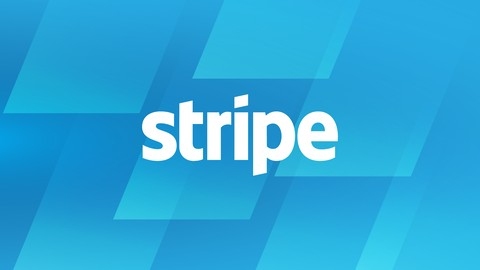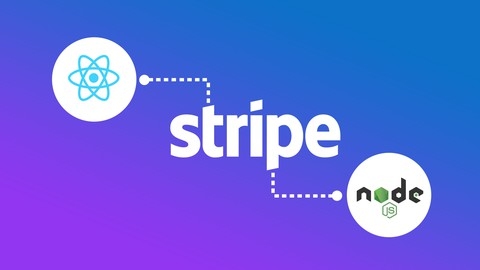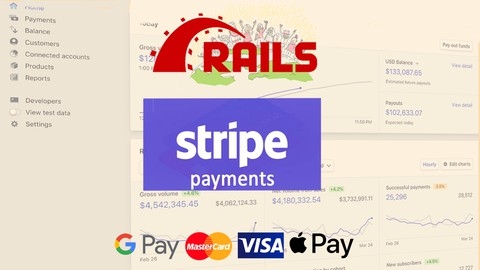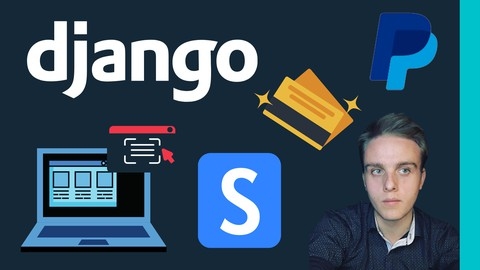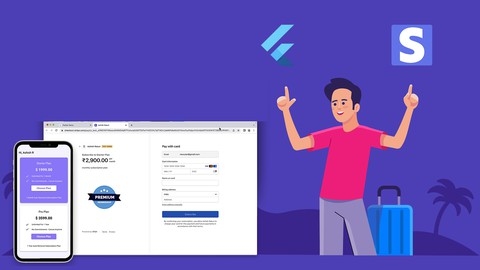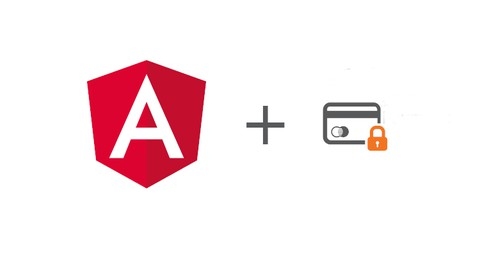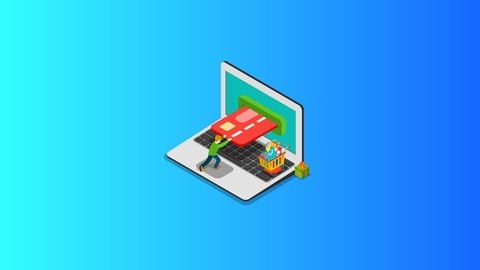Stripe has become an indispensable tool for businesses of all sizes, empowering them to seamlessly process payments, manage subscriptions, and build robust e-commerce platforms.
Understanding Stripe’s functionalities is crucial for anyone involved in online businesses, from developers to entrepreneurs.
By learning Stripe, you can unlock the potential to create secure and efficient payment systems, expand your business reach, and ultimately drive growth.
Finding the perfect Stripe course on Udemy that caters to your specific needs and learning style can be challenging, given the vast number of options available.
You’re searching for a course that not only covers the fundamentals but also delves into advanced features, providing practical examples and hands-on projects to solidify your understanding.
We’ve meticulously reviewed numerous Udemy courses, and based on our analysis, Stripe In Practice emerges as the best course overall.
This comprehensive course takes you beyond the basics, guiding you through the process of building a real-world e-commerce application that handles both one-time purchases and recurring subscriptions.
You’ll learn how to leverage Stripe’s powerful features, integrate with popular tools like Node.js and Firebase, and deploy your application to a production environment.
While Stripe In Practice stands out as our top recommendation, Udemy offers a variety of other excellent Stripe courses that cater to different learning preferences and skill levels.
Keep reading to discover our curated list of top Stripe courses on Udemy, each offering unique insights and approaches to mastering this essential payment processing platform.
Stripe In Practice
In this course, you will go beyond the basics of Stripe to build a real-world e-commerce application that handles both one-time purchases and recurring subscriptions.
You will begin by setting up your development environment with popular tools like Node.js, Express, Angular, Firebase, and Google Cloud.
You will then dive into Stripe’s powerful features, including Stripe Checkout, to create a seamless and secure checkout experience for your users.
The course teaches you how to use Stripe’s API to process payments, manage customer data, and implement features such as card tokenization for enhanced security.
You will discover how to leverage Firebase Authentication to manage user accounts and secure your application using JWTs (JSON Web Tokens).
You will learn to use Firestore, a NoSQL database, for storing and managing your application’s data efficiently.
You’ll learn about Firestore Security Rules, ensuring that only authorized users can access sensitive information.
The course guides you through setting up and using Stripe webhooks, which are automated notifications sent from Stripe to your application when specific events occur.
You will use webhooks to automate tasks like order fulfillment and subscription management, making your application more efficient.
After building your application, you will learn how to deploy it to a production environment, making it accessible to real users.
The course covers using Google Cloud’s App Engine and Firebase Hosting to host and manage your application, ensuring scalability and reliability.
Stripe Masterclass With React.js & Node.js
This Stripe Masterclass will take you through the process of building a complete e-commerce site from start to finish.
You’ll begin with the front-end, using React.js to build the user interface.
You’ll use Create React App (CRA) to set up your project quickly and efficiently.
You’ll learn how to structure your project with components for everything from the header and footer to product displays and shopping cart functionality.
You will use CSS to style your site and learn how to address potential issues, such as conflicts that can arise with Node Sass.
Next, you’ll dive into building the shopping cart functionality itself.
This is where you’ll learn how to use React Context and the useReducer hook.
You will learn how to add and remove items from the cart, manage item quantities, and persist the cart data so the user’s selections are saved.
You’ll also gain experience using SVG components, which you can use to enhance the look and functionality of the shopping cart.
You will learn to set up a Stripe account and implement the Stripe Checkout process into your site.
This will allow users to make secure payments for their purchases.
You’ll become familiar with Stripe’s features, including checkout sessions, handling successful and canceled payments, and setting up webhooks.
You’ll discover how to use webhooks to manage events such as order confirmation and payment updates.
You’ll even learn how to create a custom checkout flow tailored to your specific needs.
Finally, you will learn how to set up user authentication using Firebase.
You’ll learn how to create user accounts, sign-up and sign-in components, manage user profiles, and securely store user data.
You’ll also discover how to implement features like saving credit card information, which will make the checkout process smoother for returning customers.
Learn Stripe PHP: Make Checkout Webpages
This course takes you on a journey from setting up your development environment to mastering the intricacies of Stripe integration.
You begin with the fundamentals, learning how to configure your web server and install the necessary tools like the Stripe PHP library.
You then delve into the heart of Stripe, understanding how to generate and utilize Stripe API keys, a crucial step in connecting your website to the payment processing platform.
You then discover the power of Stripe’s features by building a dynamic and user-friendly checkout form using the Stripe Checkout Form feature.
You learn how to seamlessly integrate elements like the “Stripe Remember Me” functionality, enhancing user experience and encouraging repeat purchases.
You then acquire the ability to process payments securely by making charge requests, accessing and interpreting charge response data, and skillfully handling any error scenarios that may arise.
Finally, you acquire the ability to create a seamless and engaging checkout experience by integrating Stripe JS with JQuery, allowing for dynamic updates and instant feedback within your forms.
You also uncover the potential of recurring revenue by learning how to create a subscription service using Stripe and PHP.
This empowers you to offer subscription-based products or services, unlocking new avenues for business growth.
Complete Guide to Payments with Ruby on Rails 7 (Stripe API)
This course teaches you how to build payment systems from the ground up using Stripe and Ruby on Rails 7.
You will start by learning how to set up both monthly and yearly subscriptions and then dive deeper into lifetime subscriptions with one-time payments.
The course utilizes tools like Stripe Checkout, simplifying the process for your users, and teaches you how to use Stripe Devise to manage your Stripe accounts directly within your Rails application.
You will gain the skills to build a complete e-commerce website using Rails 6.
This includes learning how to implement a shopping cart, a checkout process, and the ability for your users to purchase multiple items.
You will also learn how to clear the shopping cart after a transaction is completed, create custom Stripe Prices from your database, and incorporate coupons and multiple currencies using the money-rails gem.
Finally, you will learn to build a SaaS blog that provides premium content for paying subscribers using Rails 6.
You will learn how to integrate Stripe with your blog, display your pricing tiers using the Stripe API, and implement a billing portal for your subscribers.
Python Django: Payment Gateways for Beginners - 2024
This course teaches you how to add payment systems to websites you create with Django.
This course starts with the basics, guiding you through setting up your coding environment on your Windows computer or your Mac.
You’ll install programs like Python, VS Code, and Django, the tools you need to build your website.
You’ll create a simple web app with Django and learn how to structure its web addresses, manage user interactions, and design its look using templates.
You then dive into the world of online payments with PayPal.
You’ll create a test account and learn how to connect your Django project to PayPal’s systems.
You’ll build a model for handling donations, making sure your website can accept payments securely.
The course also shows you how to use Ngrok, a tool that lets you test if your PayPal integration works correctly, even before your website is live on the internet.
Next, you’ll learn about Stripe, another popular way to accept payments online.
You’ll set up a Stripe account and connect it to your Django project.
The course teaches you how to securely accept payments from your users.
You’ll also learn how to customize the Stripe payment button on your website and see how easy it is for people to pay you.
You’ll test everything out and learn how to start accepting real payments, turning your Django project into a platform that can earn money.
Master Stripe Payments in Flutter: One-time & Subscriptions
This course equips you with the skills to seamlessly integrate Stripe payments into your Flutter applications, enabling you to build apps that accept payments and manage subscriptions.
You begin by setting up your Stripe account and familiarizing yourself with its features.
The course then guides you through building a “Shoes Store App,” where you’ll learn how to use Stripe Checkout to process secure one-time purchases.
You will navigate the Stripe API, mastering the handling of user transactions.
You’ll also discover how to set up webhooks, connecting your app to your Stripe dashboard for real-time updates and notifications.
You then dive into the world of subscription-based services by building a “Subscription App,” learning how to set up recurring payments and manage user subscriptions through Stripe.
The course walks you through handling various subscription plans, enabling users to manage their subscriptions, and using Stripe for automatic renewals.
You’ll also integrate your app with the Stripe dashboard, setting up webhooks to receive real-time notifications about subscription events.
Finally, you’ll delve into advanced Stripe features, like Stripe Tax for automatic sales tax calculation and collection, and Custom Customer Portal for a personalized user experience where users manage their information and billing.
Angular and Stripe payments integration
This course guides you through building an Angular application with Stripe for secure online payments.
You begin by setting up your development environment with tools like Angular, TypeScript, and Stripe, getting your workspace ready.
Then, you build a basic Angular service, learning how to manage and display data efficiently.
You discover how to create a user-friendly payment form dialog using a sub-component, ensuring a smooth user experience.
You then integrate Stripe’s card element directly into your form, enabling secure credit card input and processing.
You’ll dive into handling form submissions, ensuring data is correctly sent to the server for payment processing.
The course then teaches you to create a NodeJS server, a vital skill for handling the backend logic of your application.
You’ll learn how to use Stripe’s powerful API within this NodeJS environment to manage sensitive customer data and securely process payments.
Finally, you gain practical experience with Stripe’s API by creating customer accounts and processing charges, simulating real-world scenarios.
You will learn to display customer order history, providing users with a transparent record of their transactions.
The course also introduces you to Angular Signals, a powerful feature that helps you build more modern and efficient Angular applications, updating your skillset with the latest advancements.
Learn Web Payment Processing with Stripe - A Quick intro
This course takes a hands-on approach to teaching you the fundamentals of Stripe.
You begin by constructing a basic web application to understand the process of integrating Stripe.
You learn how to add products, design a shopping cart using jQuery, and build a controller to manage the flow of information.
With these basic elements in place, you then dive into Stripe’s payment processing features.
The course guides you through the process of creating a seamless checkout experience, reviewing payment details, and managing customer data.
You learn about handling declined payments and understanding the intricacies of Stripe’s documentation.
The course then delves into setting up a robust subscription system, guiding you through various scenarios like managing multiple subscription plans, offering discounts, and implementing trial periods.
Finally, you’ll explore integrating PayPal as an alternative payment option, expanding your payment gateway options.
This provides a well-rounded understanding of implementing different payment solutions.
